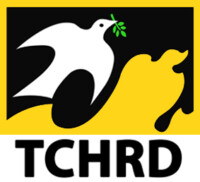བོད་མིའི་རང་དབང་སྒེར་ལངས་གསུམ་བཅུ་དུས་དྲན་ཐེངས་ ༥༤ པའི་སྔ་ཉིན་སྟེ་ཟླ་འདིའི་ཕྱི་ཚེས་ ༩ ཉིན་གྱི་མཚན་མོར། རྒྱ་གཞུང་གིས་གསང་བའི་ཐོག་ནས་རྔ་པ་ཀིརྟི་དགོན་པའི་གྲྭ་ཚེ་དཔག་ལགས་འཇུ་བཟུང་བཙན་ཁྲིད་བྱས་ཡོད་པ་དང་། དེ་ནི་རྒྱ་གཞུང་གིས་ཁྲིམས་མཐུན་མ་ཡིན་པའི་ཐོག་ཁོང་འཇུ་བཟུང་བྱས་པ་ཐེངས་གཉིས་པ་དེ་ཆགས་ཡོད།
འདི་ག་ལྟེ་གནས་ཁང་དུ་སྐུ་ཞབས་སྦྱིན་པ་ལགས་ཀྱིས་ཁོང་གི་ཆོས་གྲོགས་སྐུ་གཤེགས་རྒྱལ་གཅེས་པ་སངས་རྒྱས་ལགས་ཀྱི་ལོ་རྒྱུས་མདོར་བསྡུས་གནང་འབྱོར་བྱུང་དོན། དམ་པ་ཁོང་གི་མཚན་ཆ་ཚང་ལ་སངས་རྒྱས་རྒྱ་མཚོ་ཞུ་བ་དང་། ཕྱི་ལོ་ ༡༩༦༩ ལོར་བོད་མདོ་སྨད་བླ་བྲང་དགོན་པའི་ལྷ་སྡེ་བསང་ཁོག་གི་འབྲོག་ཁྱིམ་ཞིག་ཏུ་ཕ་མགོ་བྷ་དང་མ་བསོད་ལོ་གཉིས་ཀྱི་བུར་སྐྱེས། རང་ལོ་བཅུ་དྲུག་སྟེང་རབ་ཏུ་བྱུང་སྟེ་བླ་བྲང་དགོན་པའི་ཐོས་བསམ་གླིང་གྲྭ་ཚང་དུ་ཆོས་ཞུགས་གནང་ཡོད་པ་དང་། སྐབས་དེར་འཛིན་གྲྭའི་ནང་དཔེ་ཆ་བ་ལེགས་གྲས་ཡིན་འདུག
འདི་ག་ལྟེ་གནས་ཁང་དུ་གནས་ཚུལ་འབྱོར་གསལ། རྒྱ་གཞུང་གིས་སུམ་བཅུའི་དུས་དྲན་ཐེངས་ ༥༤ པ་དང་སྟབས་བསྟུན་ནས། ཟླ་འདིའི་ཕྱི་ཚེས་ ༧ ཉིན་ལྷ་ས་ཁུལ་དུ་ལག་ཁྱེར་ཁ་པར་ཐོག་དམིགས་བསལ་ཞིབ་བཤེར་བྱེད་མཁན་བརྡ་འཕྲིན་ཆེད་མཁས་རུ་ཁག་ཅིག་ཆེད་གཏོང་བྱས་ཡོད་འདུག
འདི་ག་ལྟེ་གནས་ཁང་ལ་གནས་ཚུལ་འབྱོར་གསལ། ཟི་ཁྲོན་ཞིང་ཆེན་དཀར་མཛེས་སེར་ཤུལ་རྫོང་ཐོག་ནས་གྲྭ་བློ་བཟང་བསམ་གཏན་དང་། བསོད་ནམས་རྣམ་རྒྱལ། ཐུབ་བསྟན་དགེ་ལེགས་གསུམ་གྱིས་རང་དབང་དང་དམངས་གཙོ་དགོས་པ་སོགས་ཀྱི་སྐད་འབོད་བྱས་ཤིང་། འཕྲེད་དར་ཐོག་ཡི་གེ་དང་༸གོང་ས་མཆོག་གི་སྐུ་པར་ཕྱར་ཏེ་ངོ་རྒོལ་ཁྲོམ་སྐོར་བྱས་ཡོད་ལ། རྒྱ་གཞུང་ཉེན་རྟོག་པས་ཁོང་གསུམ་འཇུ་བཟུང་བྱ་རྩིས་བྱས་སྐབས། མི་སྐྱ་བློ་བཟང་སྐལ་བཟང་དང་ངག་དབང་རྒྱ་མཚོ་གཉིས་ཀྱིས་བཀག་འགོག་བྱས་རྐྱེན། རྒྱ་གཞུང་ཉེན་རྟོག་པས་མི་ལྔ་པོ་མཉམ་དུ་འཇུ་བཟུང་བཙན་ཁྲིད་བྱས་འདུག
In the year 2012, the human rights situation in Tibet hit a new low even as Tibet remained closed to independent media, UN monitors, international fact-finding delegations or visitors. The Chinese government effectively blocked communication channels and prevented information about human rights abuses from going out of Tibet. Despite heavy surveillance and restrictions, individual Tibetans continued to let the world know about the real situation in Tibet often at great personal risk. As the UN Special Rapporteur on Right to Food told the Human Rights Council session in March 2012: “We know that regularly the communication systems: Internet, the phones, SMS’s are blocked and Tibet is completely closed to independent observers, including the media.”
Religious Repression in Tibet 2012 by

Annual Report – TCHRD – 2012 by
Annual Report – TCHRD – Tibetan – 2012 by
A Tibetan father of one who self-immolated in protest against the Chinese government early this month is being treated in a hospital in Lanzhou city, capital of Gansu Province, according to reliable information received by TCHRD.
Sungdue Kyap, 29, set himself on fire at around 3 pm (local time) on 2 December on highway no. 213 near Bora Monastery in Sangchu (Ch: Xiahe) County in Kanlho (Ch: Gannan) Tibetan Autonomous Prefecture, Gansu Province.
Official crackdown on Bora Monastery continues with the detention of five monks this month in Sangchu (Ch: Xiahe) County in Kanlho (Ch: Gannan) Tibetan Autonomous Prefecture, Gansu Province.

TCHRD has learned from reliable sources that on 3 December 2012, Public Security Bureau (PSB) officers from Amchok (Ch: Amuqu) County along with Bora Township government officials detained five monks – Gedun Gyatso, 47, Lobsang Phagpa, 34, Jamyang Soepa, 25, Jamyang Lodoe, about 20, and Jamyang Gyatso, about 20, from their monastic quarters.

Three Tibetan monks have ‘disappeared’ since their detention this month by local police in Chabcha (Ch: Gonghe) town of Serchen County in Tsolho (Ch: Hainan) Tibetan Autonomous Prefecture, Qinghai Province.
According to information received by TCHRD, local police detained three monks from Khyamru Monastery in Serchen County for sharing information about the mass student protest that broke out on 26 November in Chabcha.
On 1 December, local Public Security Bureau (PSB) officers detained Sungrab Gyatso, 36, and since then no one including his family members and friends has received any information about his whereabouts and condition.
